Big Pun made history in 1998 when he became the first Latino rapper to go platinum, but he died just two years later after collapsing in a New York hotel room.
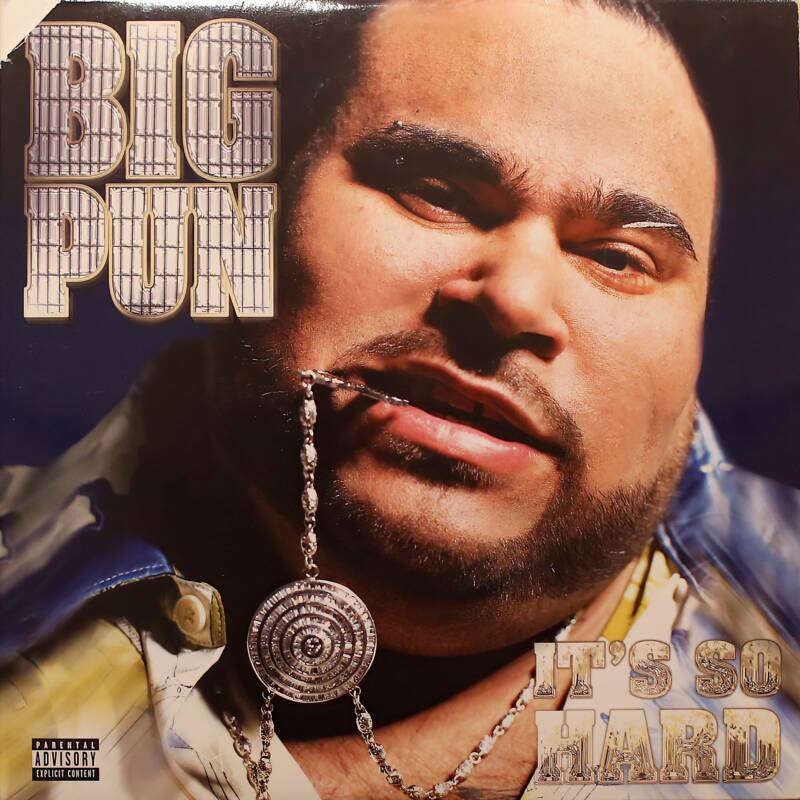
Vinyls / Alamy Stock PhotoBig Pun’s death in 2000 brought a tragic end to the young rapper’s promising career.
Big Pun’s death in February 2000 came just two years after he became the first Latino rapper to go platinum. He had taken the music industry by storm, and it seemed that nothing could stop his rise to fame — but then he suffered a massive heart attack.
The 28-year-old artist had been struggling with his weight for a decade. After dropping out of high school, he’d started turning to food to cope with life’s difficulties, gaining more than 500 pounds in 10 years.
Although Big Pun tried to lose weight several times, he was unable to overcome his food addiction. His friends were worried about him, but his health became such a contentious topic that the rapper reportedly refused to eat around them.
By the time Big Pun died on Feb. 7, 2000, he weighed 698 pounds, and his heart was three times larger than normal. Though his career was tragically cut short, he left behind an impactful legacy and continues to serve as an inspiration for Latino artists today.
The Early Life And Career Of Big Pun
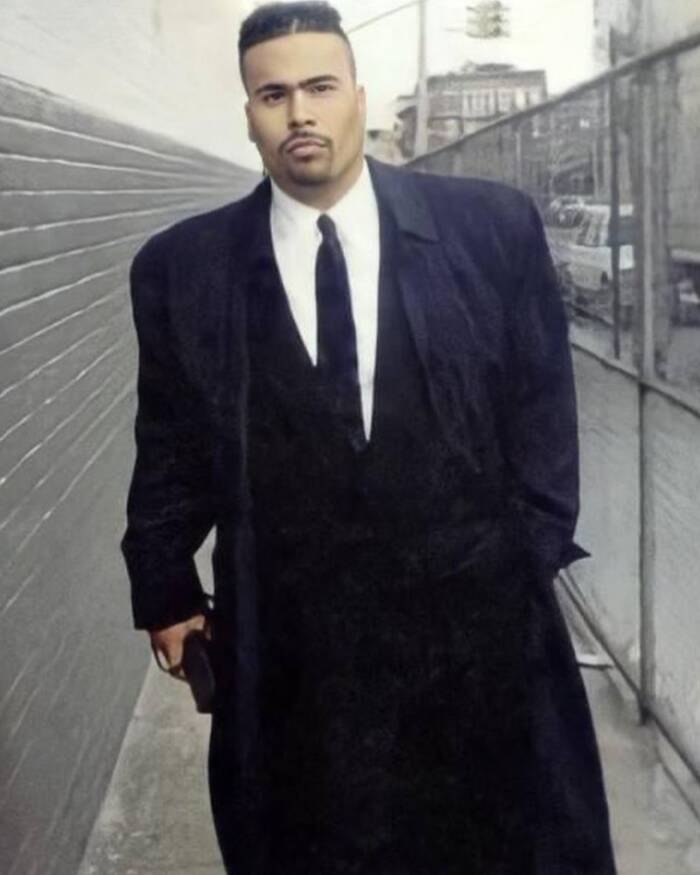
@officialbigpun/InstagramBig Pun in his late teens or early 20s, before he made his big break in the music industry.
Christopher Lee Rios, later known by the stage name Big Pun, was born to Puerto Rican parents in the South Bronx on Nov. 10, 1971. As a child, he was an avid reader who regularly played basketball and trained in boxing. However, he had a turbulent home life. He moved out at age 15 and left school shortly after.
Rios was homeless for a short period of time as a teenager, and he became a father at a young age. While he and his girlfriend soon moved into a house, got married, and had two more children, this stressful time period caused Rios to turn to food for relief.
At 18, Rios weighed 180 pounds. By the time he was 21, he weighed 300 pounds.
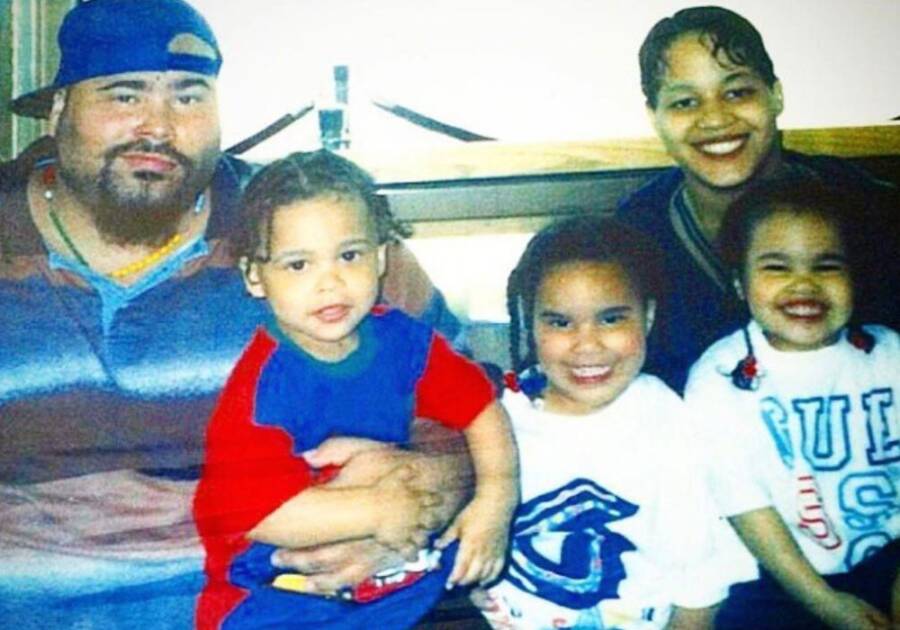
@officialbigpun/InstagramBig Pun with his wife, Liza, and their three children.
From then on, the rapper’s weight became the center of his insecurities — and it eventually led to Big Pun’s death. However, Rios didn’t let that stop him from pursuing his dreams. He soon began pursuing a career in the booming rap and hip-hop scene of the early 1990s.
Making It Big In The Hip-Hop World
Big Pun’s music career began in the late 1980s. He first became interested in breakdancing, but his true skill was rapping, and he soon gained attention from other artists in the Bronx.
According to his obituary in The New York Times, Big Pun described his rap style as “sophisticated hard-core.” He said, “I’m talking about everyday life, losing your job, losing a loved one, stress, happiness, whatever.”
In the early ’90s, he adopted the name Big Moon Dog and formed a rap group called the Full-A-Clips Crew. He then changed his stage name to Big Punisher, which was later shortened to Big Pun. Around 1995, he met fellow rapper Fat Joe, who almost immediately “knew he was one of the great ones.”
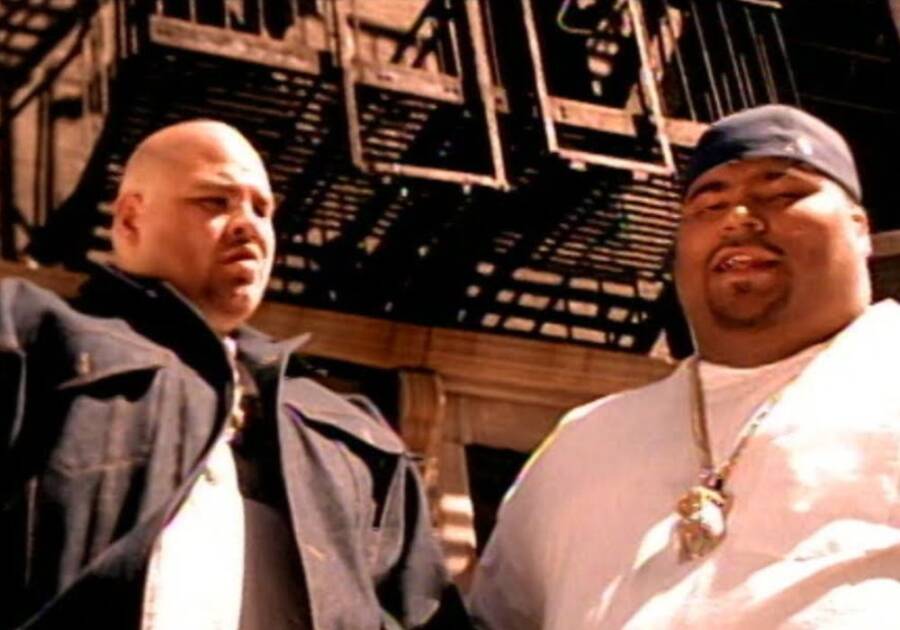
Big Pun/YouTubeFat Joe (left) and Big Pun in the music video for Big Pun’s song “Twinz.”
Big Pun’s big break came in 1995 when he was featured on Fat Joe’s second album. He then joined up with a group of Latino rappers known as the Terror Squad. However, his real success began when he released his first album, Capital Punishment, in 1998. It topped the R&B/hip-hop charts and sold more than two million copies, making Big Pun the first Latino rapper to go platinum.
As the Latino icon was skyrocketing to fame, he continued to gain weight rapidly — which ultimately led to Big Pun’s death just two years after he made rap history.
The Untimely Death Of Big Pun At Age 28
By 1999, Big Pun’s friends and fellow rappers were deeply concerned about his obesity. They urged him to enroll in a diet program run by Duke University, and he lost nearly 100 pounds. However, he quickly regained all of the weight and more.
One friend, Louis Romain, told Rolling Stone upon hearing of Big Pun’s death, “I was genuinely concerned about his health last summer as soon as he walked through the studio door. Unconfirmed reports of his attempts to lose weight eased my fears somewhat.”
However, Big Pun’s wife, Liza Rios, later explained that he was severely depressed, and although he tried to hide his struggles from his friends and associates, he was constantly eating behind closed doors.
Big Pun was set to perform on Saturday Night Live alongside Fat Joe and Jennifer Lopez on Feb. 5, 2000, but he dropped out because he wasn’t feeling well. Then, two days later, he collapsed.
The rapper and his family were staying at a hotel in White Plains, New York, while their home underwent renovations, and he started having trouble breathing in their room. Liza called 911, but emergency workers weren’t able to resuscitate her husband.
Big Pun died just before 4 p.m. on Feb. 7, 2000.
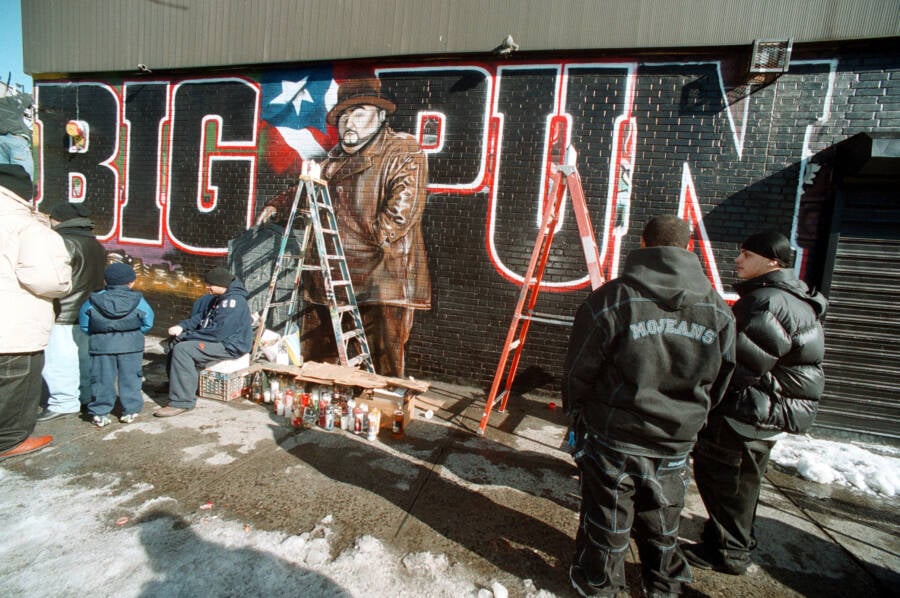
Richard Levine / Alamy Stock PhotoFans of Big Pun congregate around a mural painted in memory of the rapper in New York.
An autopsy revealed that the rapper weighed 698 pounds at the time of his death. The medical examiner found that his heart was three times larger than it should have been.
The news of Big Pun’s death devastated his closest friends. In an interview with VICE, Fat Joe recalled, “I was in Jersey in my house. The phone rang and it was his wife. She was like, ‘He’s gone, he’s gone,’ and I immediately knew. My whole body dropped.”
“We all felt guilty,” Fat Joe continued. “We all felt like, ‘Was there something we could have did?’ We wasn’t educated on nutrition. We didn’t really know what a carb was. We didn’t know nothing… My brother died… Toughest time of my life to this day.”
A reported 9,000 fans attended Big Pun’s wake the week after his death. And as his casket was wheeled into a hearse following his private funeral, someone began playing his song “Still Not a Playa,” and people danced and sang in the street.
At the time of Big Pun’s death, the rapper was working on his second album, titled Yeeeah Baby. It was released posthumously in April 2000 and earned gold record status.
Although his career came to an early, tragic end, Big Pun continued to inspire both those who knew him and those who loved his music.
“People loved his charisma, his whole aura,” Fat Joe later explained of his friend. “They would love his lyrics, his breath control, his being able to tongue-twist so many words, his punch lines, his being able to make a song about pain and hurt and being able to make a song about good times. He did it all.”
After reading about the death of Big Pun, dive into the true story of rapper Tupac Shakur’s death in 1996. Then, view 44 classic photos of ’90s hip-hop and rap artists.





